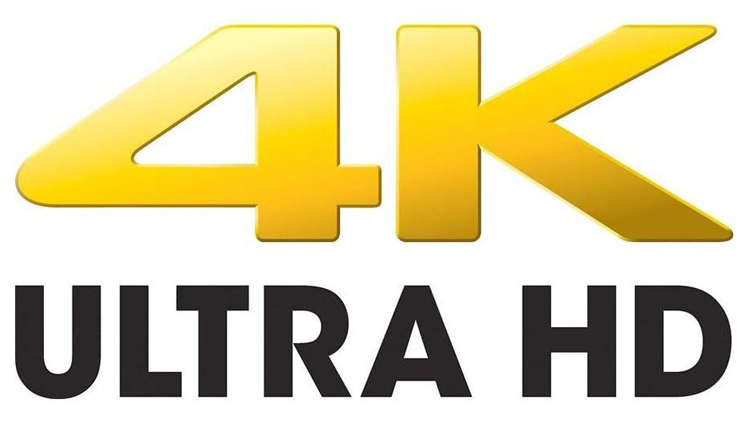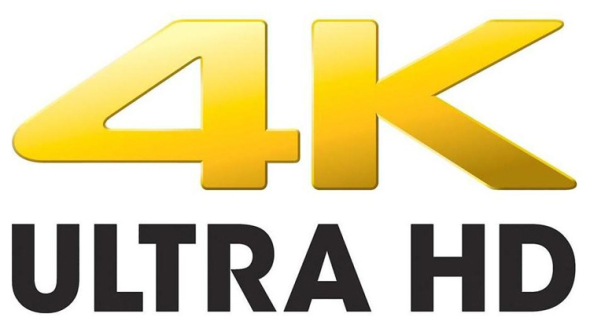When it comes to filmmaking, technology is evolving fast, and I'm ready to take another look at my recent proclamation that filming in 4K should be avoided. Developments are occuring so quickly in video that low budget 4K is starting to make sense. However, it remains a pain in the ass. I think unless your "low" budget is substantial, it should be avoided. Nevertheless…
I may have been wrong about 4K.
Well, maybe not “wrong” wrong, but now that we are in the steep part of the evolution acceleration curve, 4K has become a standard for digital shooting, even on a low budget.
Key Decisions
But first lets look at what decisions you need to make before you start filming. These choices will greatly impact your storage requirements, and you need to know this stuff up front. Never start shooting in 4K without a good estimate of your total storage needs.
Video bit rates for 4K uncompressed run to hundreds of megabytes per second, depending on color bit depth and frame rates. At that rate you would need more than 41 TB to store 24 hours of video. Ouch! If you're shooting for a 1.5 to 2 hour feature, your shooting ratio is likely to be between 8 and 25:1. Any way you look at it, that is an enormous of storage.
How much shooting will you be doing? Every director has a unique shooting style. Some are extremely parsimonious, carefully planning the shots needed in a sequence and keeping any retakes to a minimum. Others have no plan and want to get every possible nuance in camera, shooting the same scene over and over again with different direction and from different angles. In that case, a 45-second shot could come to an hour or more of footage on disk — a prodigious amount. My advice? If you are shooting 4K, learn to be parsimonious. However, assuming you're shooting at 24 or 30 fps and you use a camera that records to a 4K codec that offers a good balance between bit rate and picture quality — and is solidly supported by your NLE of choice — things are looking reasonably good for you these days.
Bandwidth
Back in the day, standard definition TV was transmitted uncompressed or just 2:1. I remember having difficulty getting my hard drives to keep up with the then-massive 22 Mbps bitrate, giving me jumpy video in real time. To give you an idea of how far we've come with encoding, current HDTV channels are transmitted over the air at less than 20 Mbps. Compressed 4K video from YouTube requires even less bandiwdth, and it looks amazing. So you'll be editing high-quality compressed footage and reconforming if necessary.
Your chances of working online are improving, with high-data-rate 10 TB drives coming in the near future. A pair of them might be enough to keep your well-planned and well-compressed footage online. Forget keeping all that online in raw form. Most editing systems that would be deployed on a microbudget film won't handle it easily, even with today's outstanding equipment performance. A big 2 TB SSD could make it possible for short projects, but not practical. Considering its massive infrastructure requirements and the availability of good edit-friendly codecs, we do not need to edit in raw! You can conform back to raw if you need it at the end of the process (say for VFX work or aggressive color grading), but you are going to pick your compression algorithm (your options may be dictated by your camera of choice) and run with it for editing.
Your Shooting Style
New filmmakers usually shoot more because they don't know exactly what they're doing yet. The more insecure you are, the higher your ratio goes. Better planning and clear goals really help keep your shots organized and under control. If you like to shoot a lot of random crap, stick to 1080p.
Some Expert Advice
Here is a very good video from Larry Jordan, who knows his stuff about filmmaking and digital technology. Here he explains what you should be thinking about when planning your 4K pipeline and how to calculate a few things.
Michael Kammes is an industry consultant in the realm of storage and bandwidth for video. I wanted his input on bandwidth considerations in working with 4K. That bandwidth is rapidly coming online at an affordable price both with USB 3.0 and SSD drives. Here are his suggestions for a low-budget filmmaker who wants to shoot 4K.
Low budget filmmakers have three things to consider when looking into editing on a 4K production.
1. Acquisition codec. High-end cameras shoot beautiful images, but often they are difficult to work with in real time. Knowing the acquisition codec will allow you to determine if your NLE ( nonlinear editor) can handle that codec and what other user experiences are.
2. Number of hours of footage. Knowing the hours of content, multiplied by the acquisition codec ratio, can give you a ballpark number for the space you'll need when working with your camera originals. If you moving to an offline/online model, be sure to add in this media as well.
3. Horsepower of NLE and computer. Older computers, or NLEs with limited capability, may not be able to handle your camera originals.
The move in the industry has been toward instant gratification. I shoot, and thus want to edit immediately. This is incongruent, as editing technology is constantly chasing acquisition technology. Thus, it's often prudent to adopt more stable workflows.
For 4K and post, this becomes an offline/online model. That is: taking your camera originals, transcoding them to a more edit-friendly codec, utilizing that in post, then reconforming (if needed) during the online process. The surprising thing is, if you have enough storage, and you create your offlines right, you may not even need to conform at the end — your image quality will be great to release in. Too often, indie filmmakers get caught up in the tech of the edit and assume offline means poor quality, not realizing the reality of what will and won't be seen when the project gets viewed online.
In a single-editor model, most common storage platforms use Thunderbolt or USB 3.0 [interfaces], which have plenty of bandwidth to serve up multiple streams of editing-friendly codecs. Now the only limitation is capacity, and with 10 TB drives becoming available, this limitation is fading fast.
The amazing decrease in equipment costs, including 6 TB hard drives coming out at a reasonable price, makes it possible to set up a spinning-disk 4K pipeline on a budget. Storing 32 or more hours of 4K media is also possible and even practical using new LTO/LTFS tape standards. Tape has the advantage of being an inactive medium with 30-year storage life — its your ideal archival medium. The tape drives are expensive, but you can rent them.
StorageDNA's DNA Evolution LTO/LTFS tape storage systems can be integrated with Avid Interplay Web Services. StorageDNA has its mini-media asset management system integrated into the Avid Software. The Evolution system is also compatible with the (unfortunately named) Avid ISIS storage systems. The combo provides fast archive and restore operations, and it can allow you to use tape as a conform medium, keeping your "camera original" footage safe until its time to conform your edit — all of this at a lower cost than a traditional SAN or NAS set-up.
On a microbudget project, you probably won't want to invest in owning the Evolution hardware, but you can rent it.
Wrap
I still think going 4K on a low or microbudget film is a poor decision at this time. Look into it and maybe plan for the near future. But if you're dead set on it, and you have a little budget, hell … go for it. Rent your archival tape drives, buy your medium, and you might be able to pull it off. If you do, please share it with us here with some details. Also, I recommend visiting Larryjordan.com where you'll find hundreds of videos on how to make movies on a budget. He has the best speaking voice and he knows his stuff. He didn't pay me to say this. He's a Member of the PGA and the DGA, and he also publishes a useful Adobe and Final Cut Pro newsletter with cool tutorials.
Also, I just returned from speaking at SIGGRAPH Santiago, way down in Chile. It was quite an interesting experience. Comparing it to SIGGRAPH North America isn't really possible. It's a different animal. Santiago is a smaller affair focused on students mixing with industry pros. It is far more intimate and less commercial than the big show alternately held in L.A. and other cities. There are far fewer presentations but they were of a high caliber with a focus on character animation this year.
Speakers were some of the best animators in the business. I was in a constant state of amazement at their accomplishments. They included Greg Berridge, Aaron Blaise, Aaron Estrada, Andrew Chesworth, Carlos Zaragoza and Aurora Jimenez … oh, and me. Google us all. The conference takes place in Santiago, the capital of Chile and is repeated in Valparaiso, a world heritage city on the coast. Both venues were beautiful and the audiences were remarkably spirited and interactive. It was nice to see that friends way down below the equator are doing great work. Thanks for the invitation, guys.
Okay, it's the holiday season, so I'm thinking about the Golden Pixie Awards. I've been looking at candidates, from hardware to people to software. I'd like to open up nominations from my readers. I have a bunch that I'm considering, but I'm one person and I don't do it all. You collectively do. So please, please leave your nominations in the comments below. I appreciate it in advance. All the best.
-P-
Topics: Blog Films and Filmmakers Peter Plantec
Did you enjoy this article? Sign up to receive the StudioDaily Fix eletter containing the latest stories, including news, videos, interviews, reviews and more.





Thank you for this encouraging article, Peter and happy holidays!
Thanx Rami. And a happy new year to you.